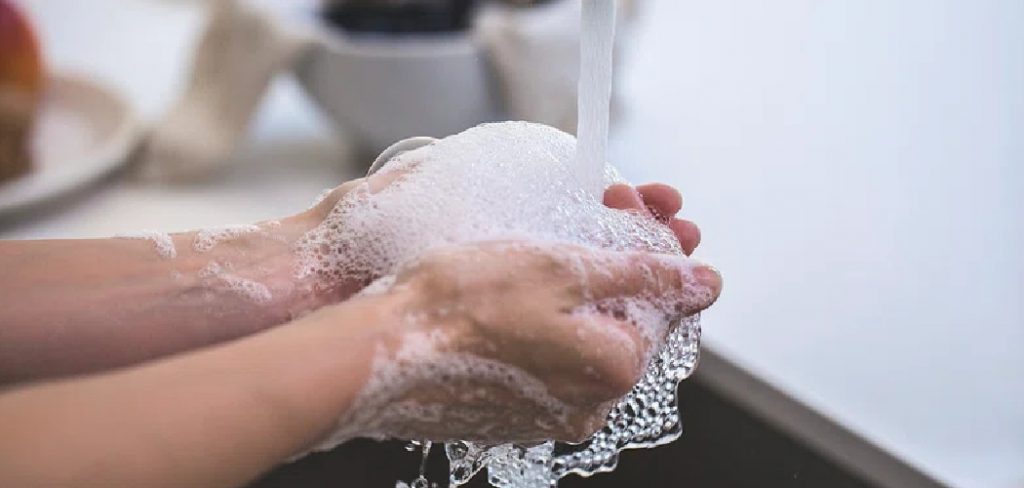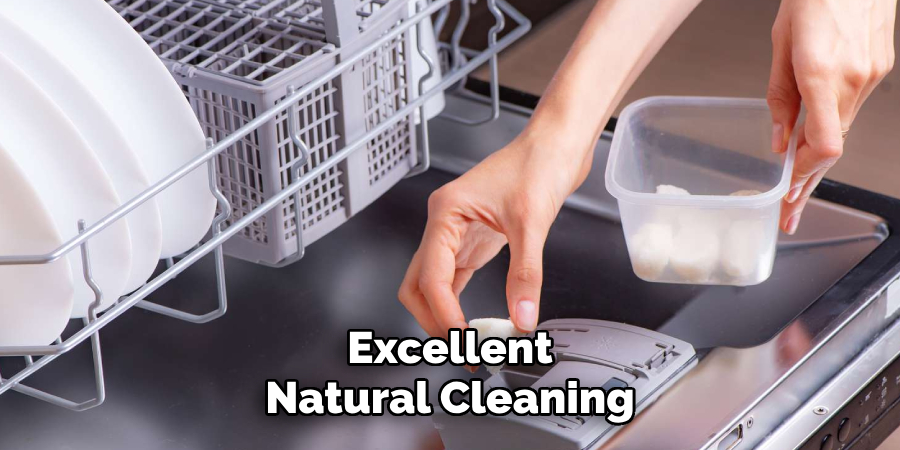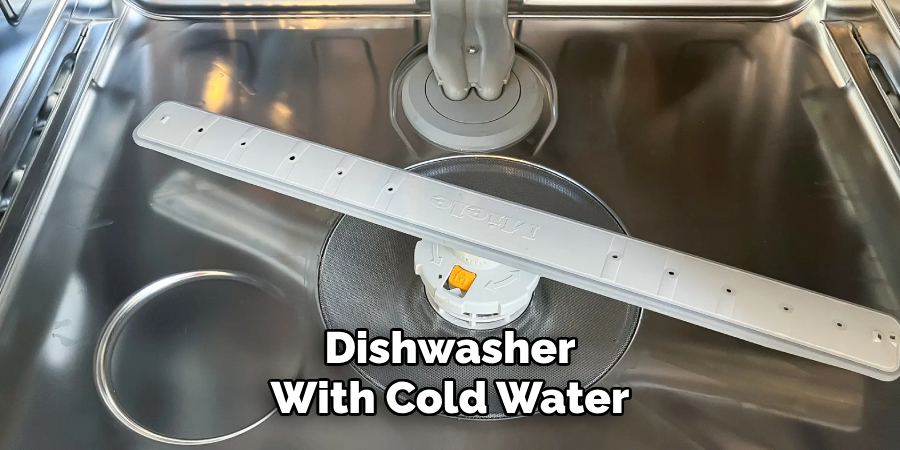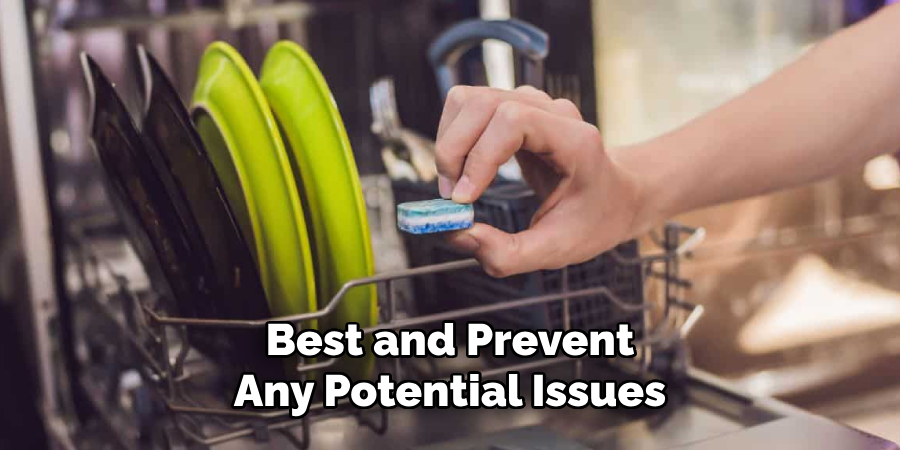Foam buildup in your dishwasher can be both frustrating and problematic, potentially leading to poor cleaning results and even damage to the appliance over time.

This issue often occurs due to the use of incorrect detergents, overuse of soap, or residue from other cleaning products. Fortunately, there are straightforward solutions to eliminate foam and prevent it from returning, ensuring your dishwasher runs efficiently and effectively.
This guide on how to get rid of foam in dishwasher will walk you through the steps to address and prevent foam in your dishwasher.
Why Does Foam Build Up in Dishwasher?
Before discussing how to get rid of foam, it’s important to understand why it occurs in the first place.
Foam buildup can be caused by a few different factors, including:
Incorrect Detergent:
Using regular dish soap or laundry detergent instead of dishwasher-specific detergent can cause excessive foaming. These products are not designed for use in dishwashers and can create a sudsy mess.
Overuse of Detergent:
Using too much detergent, even if it is dishwasher-specific, can also result in foam buildup. This occurs because excess soap cannot be fully rinsed away by the dishwasher’s cycle.
Residue from Other Products:
Residue from hand-washing dishes or cleaning products can make its way into the dishwasher and cause foam. This residue may include grease, oil, or other substances that react with the detergent to create suds.
Needed Materials
To effectively get rid of foam in your dishwasher, you will need the following materials:
Dishwasher-safe Container:
You will need a container that is safe to use in the dishwasher, such as a glass or plastic bowl.
White Vinegar:
White vinegar is an excellent natural cleaning agent and can help to break down and dissolve foam.

Dishwasher-Safe Cleaning Cloth:
A soft cloth that is safe to use in the dishwasher will be needed to wipe away foam residue and clean the interior of your dishwasher.
7 Simple Step-by-step Guidelines on How to Get Rid of Foam in Dishwasher
Step 1: Stop the Dishwasher Cycle
As soon as you notice excessive foam in your dishwasher, it is important to stop the cycle immediately to prevent further damage or mess. Most dishwashers have a cancel or stop button; press it to halt the current cycle and allow the dishwasher to drain.
If your dishwasher does not have this feature, carefully open the door and turn off the machine. This step will prevent the foam from spreading further and allow you to address the issue effectively.
Step 2: Remove Any Excess Foam
Using a dishwasher-safe container, scoop out any excess foam from the interior of the dishwasher. Alternatively, you can use a kitchen sponge or cloth to carefully remove the foam. Place the foam in a separate container and dispose of it properly.
If the foam is too thick or difficult to remove with a container or sponge, you can use paper towels to soak up as much of it as possible. Be gentle and avoid pushing the foam deeper into the dishwasher.
Step 3: Rinse with Cold Water
Next, rinse your dishwasher with cold water. You can either fill a clean container with cold water and pour it into the dishwasher or use the faucet if it is close enough. This step will help to break down and dissipate any remaining foam further.

The cold water will also help to cool down the interior of your dishwasher, preventing any potential damage from the high temperatures during a cycle.
Step 4: Add Vinegar
Vinegar is an excellent natural cleaner and can effectively break down foam. Fill a dishwasher-safe container with white vinegar and place it in the top rack of your dishwasher.
Run a short, hot cycle to allow the vinegar to mix with the water and clean out any remaining soap residue that may be causing foaming.
Step 5: Wipe Down Interior
Once the cycle with vinegar has finished, open the dishwasher and use a dishwasher-safe cleaning cloth to wipe down the interior. Pay close attention to areas where foam may have accumulated, such as along the walls, door, and near the spray arms.

Removing any remaining residue will help prevent future foam buildup and ensure that your dishwasher is clean and ready for use. Be sure to thoroughly dry the interior with a towel if needed to remove any excess moisture before running another cycle.
Step 6: Run a Rinse Cycle
After wiping down the interior of your dishwasher, it is important to run a rinse cycle to ensure that all remaining vinegar, soap residue, and foam are completely flushed out. Select a quick rinse cycle on your dishwasher and run it with no dishes or detergent added.
This step will help clear out any lingering debris, leaving your dishwasher clean and ready for regular use.
Step 7: Adjust Detergent Usage
Going forward, be mindful of the amount of detergent you use in your dishwasher. Follow the manufacturer’s recommended guidelines or start with less and gradually increase if needed.
If you have hard water, consider investing in a dishwasher detergent specifically designed for this type of water. Hard water can cause excessive sudsing, so using a suitable detergent can help prevent foam buildup in the future.
Following these simple steps on how to get rid of foam in dishwasher will effectively eliminate foam in your dishwasher and help prevent it from returning. By using the right detergents, regularly cleaning and maintaining your dishwasher, you can ensure that it runs efficiently and effectively for years to come. Remember to always follow the manufacturer’s instructions and guidelines for best results.
Preventing Foam Buildup in Dishwasher
In addition to following the proper steps on how to get rid of foam in dishwasher, there are some preventive measures you can take to avoid foam buildup in the future. These include:
- Use dishwasher-specific detergent and follow recommended usage guidelines.
- Avoiding overfilling your dishwasher with dishes, as this can cause excess soap residue and lead to foaming.
- Checking for any food debris or residue before loading dishes into the dishwasher.
- Regularly clean and maintain your dishwasher, including wiping down the interior and cleaning the filter.
By taking these preventative measures, you can help ensure that your dishwasher runs smoothly and efficiently without experiencing foam buildup.
Cleaning and Maintenance Tips
To keep your dishwasher running at its best and prevent any potential issues, here are some additional cleaning and maintenance tips to keep in mind:
- Regularly clean the filter at the bottom of your dishwasher to remove any debris or buildup. This will help prevent clogs and ensure that your dishes come out clean.
- Use a dishwasher cleaner once a month to remove any built-up residue or bacteria from the interior of your dishwasher. Follow the instructions on the cleaner for best results.
- Clean around the door seal regularly with a cloth or sponge to avoid mold or mildew buildup.
- Check and clean the spray arms if needed, as food particles can get stuck and cause blockages.

By incorporating these tips into your cleaning routine, you can extend the life of your dishwasher and ensure that it continues to run efficiently. Remember, proper care and maintenance will not only prevent foam buildup but also keep your dishes clean and sanitized. So, be proactive in taking care of your dishwasher to avoid any potential issues in the future. Happy dishwashing!
Frequently Asked Questions
Q: Can I Use Regular Dish Soap in My Dishwasher?
A: No, regular dish soap creates too many suds and can lead to foam buildup and potential damage to your dishwasher. It is important to use a dishwasher-specific detergent as it is designed for the machine’s high temperatures and water flow.
Q: How Do I Know if My Dishwasher Has Hard Water?
A: If you notice a white, chalky residue on your dishes or inside your dishwasher, this is a sign of hard water. You can also test the hardness of your water with a testing kit available at most hardware stores.
Q: Can I Use Bleach to Get Rid of Foam in My Dishwasher?
A: No, bleach is not recommended as it can damage the rubber components and surfaces inside the dishwasher. Stick to using vinegar as an effective and safe alternative for removing foam.
Q: Should I Leave My Dishwasher Door Open After Running a Cycle?
A: It is best to leave the dishwasher door slightly open after running a cycle to allow for air circulation and prevent any moisture buildup inside. This will also help prevent potential mold or mildew growth. Remember to always empty out any remaining water in the bottom of the dishwasher before closing the door.
Q: How Often Should I Clean My Dishwasher?
A: It is recommended to clean your dishwasher at least once a month, but it may need more frequent cleaning depending on usage and water hardness. Regularly wiping down the interior and cleaning the filter can also help prevent any potential issues.
Conclusion
Maintaining your dishwasher through regular cleaning and proper usage is essential for ensuring its longevity and efficiency. By addressing issues like foam buildup promptly and following the recommended preventative measures, you can avoid unnecessary breakdowns and ensure your dishwasher operates smoothly.
Remember that investing a little time into cleaning and maintenance will save you from costly repairs in the future and provide consistently sparkling, sanitized dishes. Take care of your dishwasher, and it will take care of your dishes!
Thanks for reading this article on how to get rid of foam in dishwasher.
Professional Focus
Angela Ervin, a former interior designer turned blogger, specializes in kitchen design and renovations. Through her website, she blends her passion for cooking with design expertise, sharing practical and creative ideas. Known for balancing functionality and beauty, Angela’s insightful content has made her a trusted voice in home design and lifestyle.
About the Author
Angela Ervin, an experienced interior designer and blogger, combines her passion for kitchen renovations with storytelling. Living in Petersburg with her family, she enjoys cooking and testing her projects firsthand. Known for her humor and relatable style, Angela shares creative, functional design insights through her content, making her a trusted voice in home design.
Education History
University: Virginia Commonwealth University
Degree: Bachelor of Fine Arts (BFA) in Interior Design
- Angela’s education at VCU focused on mastering core interior design principles, including spatial planning, color theory, materials selection, and sustainable design practices.
- She gained hands-on experience through studio projects and collaborative design exercises, which honed her ability to create functional and aesthetically pleasing environments.
- Her coursework also emphasized problem-solving and practical applications of design, preparing her for real-world projects like her self-directed kitchen renovations.
- The program’s strong foundation in both technical skills and creative expression shaped Angela’s ability to seamlessly integrate form and function in her work.
